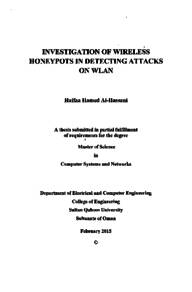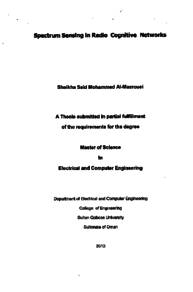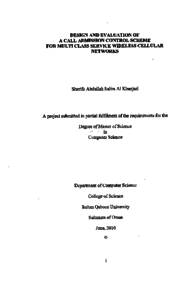Document
Analysis of uplink power control and SC-FDMA in LTE System.
Publisher
Sultan Qaboos University
Gregorian
2013
Language
English
Subject
English abstract
Long term evolution (LTE) is the latest generation radio access system that supports today an end-user requirements. The fundamental aim of LTE is to improve data rates, system capacity and reducing latency. The thesis presents an analysis of two of the main factors that play an important role in LTE uplink transmission, power control and single carrier – frequency division multiple access (SC-FDMA).
In this thesis, it was noted that with a conventional power control scheme, the received power spectral density (PSD) by evolved NodeB (eNodeB) is same from all users independent of their path loss for a given SNR target. While with a fractional power control where path-loss is partially compensated by the power control scheme, the higher is the path-loss, the smaller
is the received power at eNodeB and thus cell edge user equipments (UEs) are received with a weaker signal. They however create less inter-cell interference because their transmitted
power is also reduced.
Bit error rate (BER) is the key parameter for indicating the system performance of any data link. In this thesis, a proposed SC-FDMA system model was implemented and BER was analyzed for a system in multipath fading environment and with and without an equalizer. It was found that an equalizer is required to get an acceptable BER value - using ITU pedestrian A channel power delay profile - as the coherent bandwidth (Bc) is less than the sampling bandwidth (Bs) of the proposed frequency selective channel system. When multipath Rayleigh fading was introduced along with AWGN to the channel without an equalizer, the BER was very high (4.75x10") because the coherent bandwidth (Bc 90% = 0.44 MHz) is less than the sampling bandwidth of the model (Bs = 1.92 MHz). However, when an equalizer was added to the model, BER reduced to 9x10.
Member of
Resource URL
Category
Theses and Dissertations




